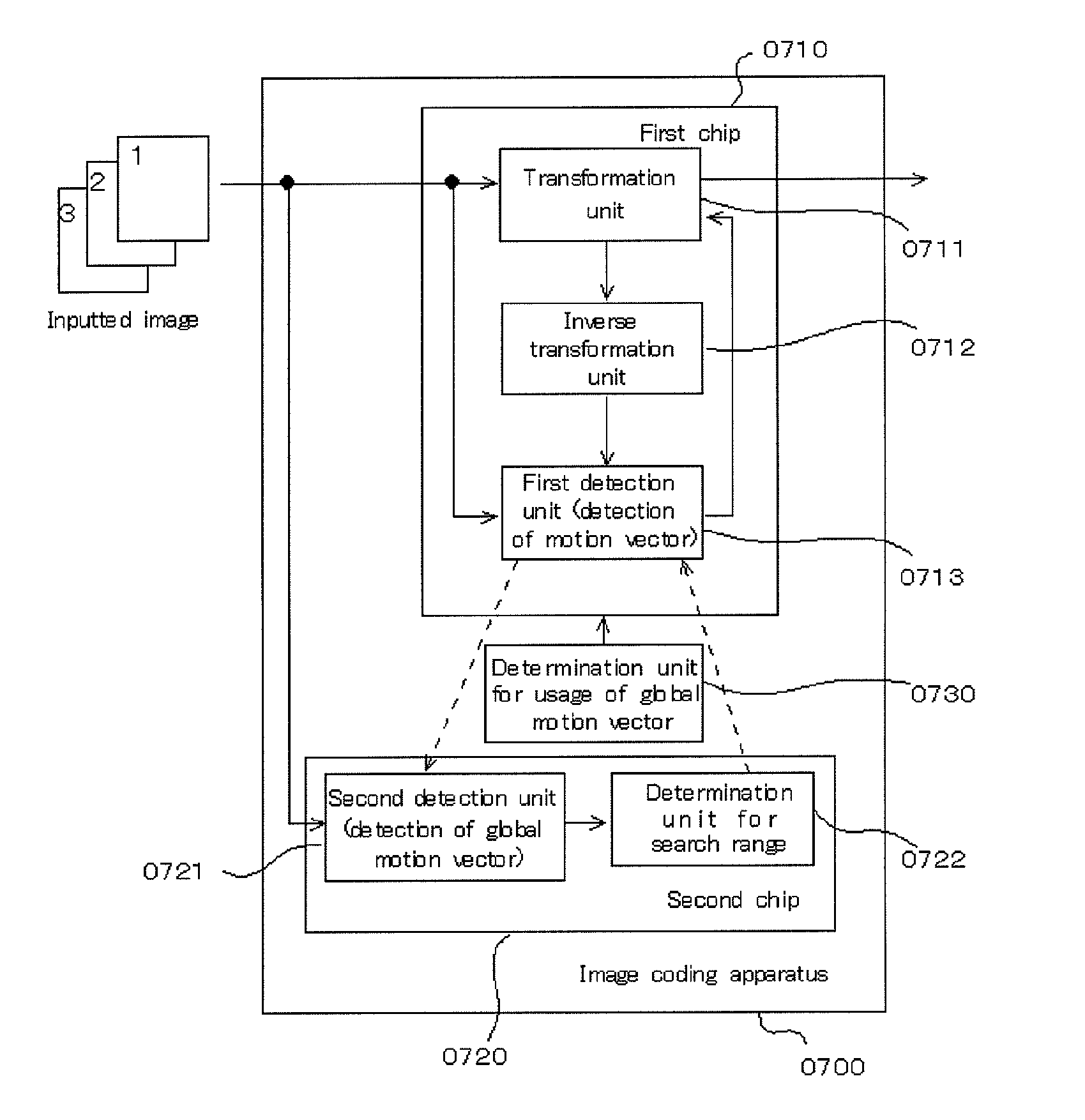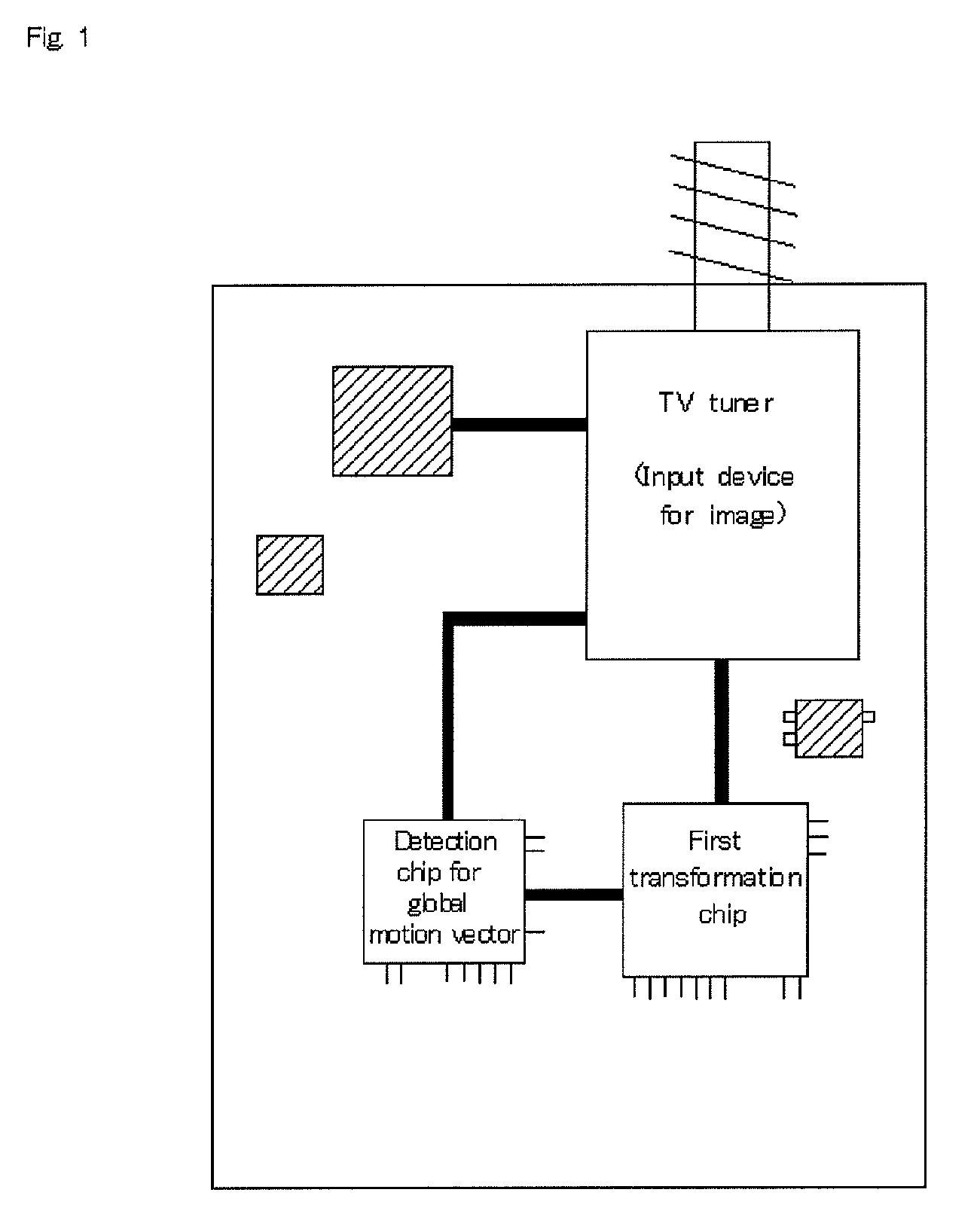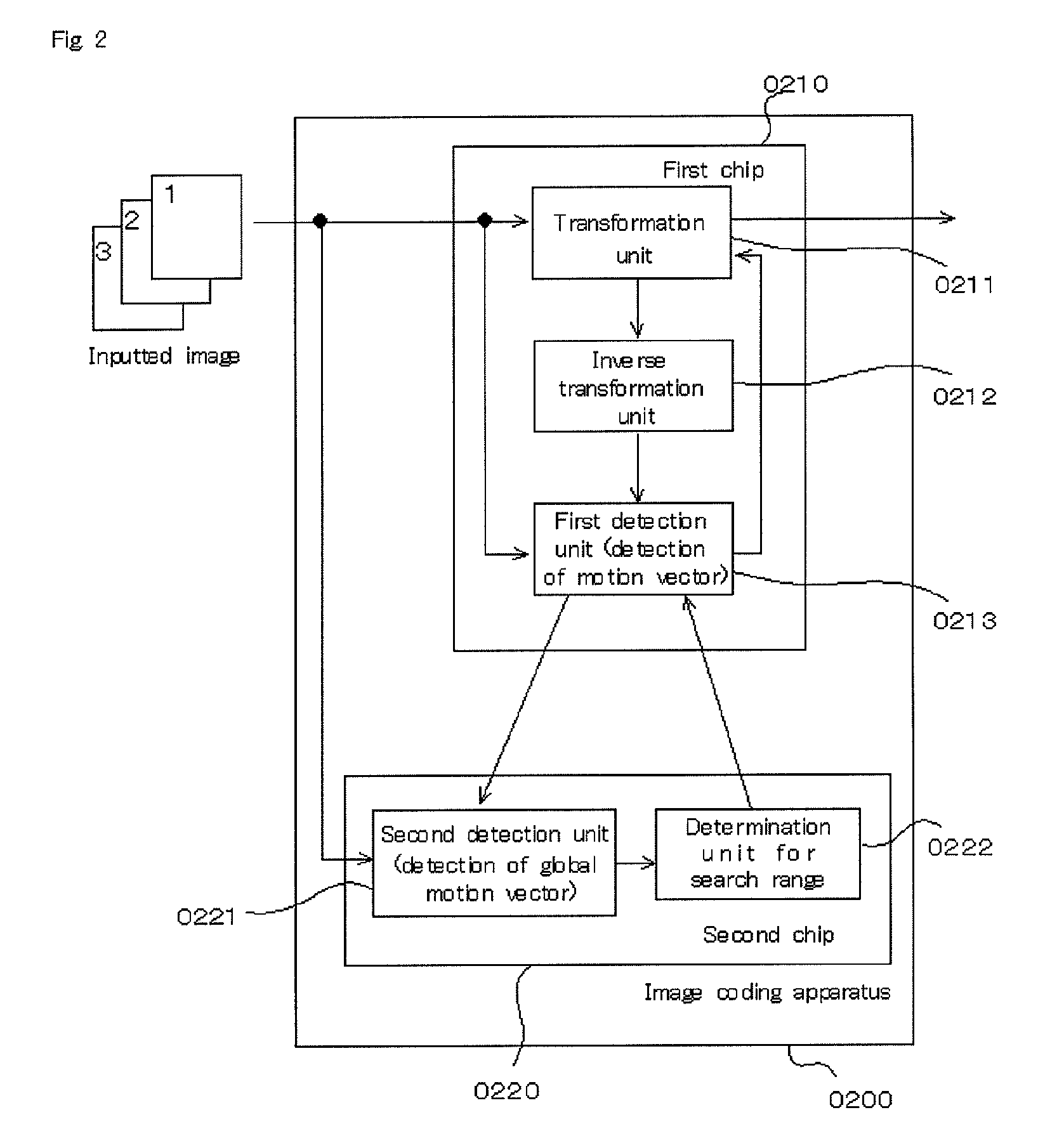Image encoding apparatus and image encoding method
a technology of image encoding and coding method, which is applied in the field of image encoding apparatus, can solve the problems of frame referenced upon detection of global motion vector upon high-efficiency coding of image, and achieve the effects of easy switch, easy removal of errors, and easy switching
- Summary
- Abstract
- Description
- Claims
- Application Information
AI Technical Summary
Benefits of technology
Problems solved by technology
Method used
Image
Examples
first embodiment
Configuration of First Embodiment
[0031]FIG. 2 is a functional block diagram of the image coding apparatus of the first embodiment. As shown in FIG. 2, an ‘image coding apparatus’ (0200) is an image coding apparatus for coding an inputted image by means of a motion vector, comprising a ‘first chip’ (0210), a ‘second chip’ (0220), which are separately arranged. The ‘first chip’ comprises a ‘transformation unit’ (0211), an ‘inverse transformation unit’ (0212), and a ‘first detection unit’ (0213). The ‘second chip’ comprises a ‘second detection unit’ (0221), and a ‘determination unit for search range’ (0222), and respective processings can be carried out independently. Note that the configuration of the present invention may be a configuration in which the first chip and the second ship are physically separated, or a configuration in which the one hardware chip is separately operated in a software.
[0032]Note that, the functional block of the apparatuses described hereinbelow can be impl...
second embodiment
Configuration of Second Embodiment
[0054]FIG. 7 is a functional block diagram of the image coding apparatus of the second embodiment. As shown in FIG. 7, an ‘image coding apparatus’ (0700) is based on the first embodiment, and comprises a ‘first chip’ (0710), a ‘second chip’ (0770), which are separately arranged. The ‘first chip’ comprises a ‘transformation unit’ (0711), an ‘inverse transformation unit’ (0712), and a ‘first detection unit’ (0713). The ‘second chip’ comprises a ‘second detection unit’ (0721), and a ‘determination unit for search range’ (0722), and respective processes can be carried out independently. Note that the above functional blocks have been described in the first embodiment, so that the descriptions thereof are omitted. In addition, the image coding apparatus of the second embodiment further comprises a ‘determination unit for utilization of global motion vector’ (0730).
[0055]The ‘determination unit for utilization of global motion vector’ (0730) has a functio...
third embodiment
Another Third Embodiment
[0070]Additionally, the image coding apparatus of the third embodiment may further comprise a ‘determination unit for size of global macro block’. The ‘determination unit for size of global macro block’ has a function of determining size of a global macro block based on the image size acquired by the acquisition unit for image size. This determination is carried out, for example, by a determination method by means of a correspondence table such as a table, in which in the case of image size ‘320×240’ pixels, a size of a global macro block is set to ‘32×24’ pixels, or a table, in which in the case of image size ‘1920×1080’ pixels, a size of a global macro block is set to ‘96×72’ pixels, or by a determination method for size of a macro block by means of a predetermined function f(x), in which image size is a parameter x. Therefore, the image coding apparatus of another third embodiment further has a function of determining the global macro block according to th...
PUM
 Login to View More
Login to View More Abstract
Description
Claims
Application Information
 Login to View More
Login to View More - R&D
- Intellectual Property
- Life Sciences
- Materials
- Tech Scout
- Unparalleled Data Quality
- Higher Quality Content
- 60% Fewer Hallucinations
Browse by: Latest US Patents, China's latest patents, Technical Efficacy Thesaurus, Application Domain, Technology Topic, Popular Technical Reports.
© 2025 PatSnap. All rights reserved.Legal|Privacy policy|Modern Slavery Act Transparency Statement|Sitemap|About US| Contact US: help@patsnap.com



